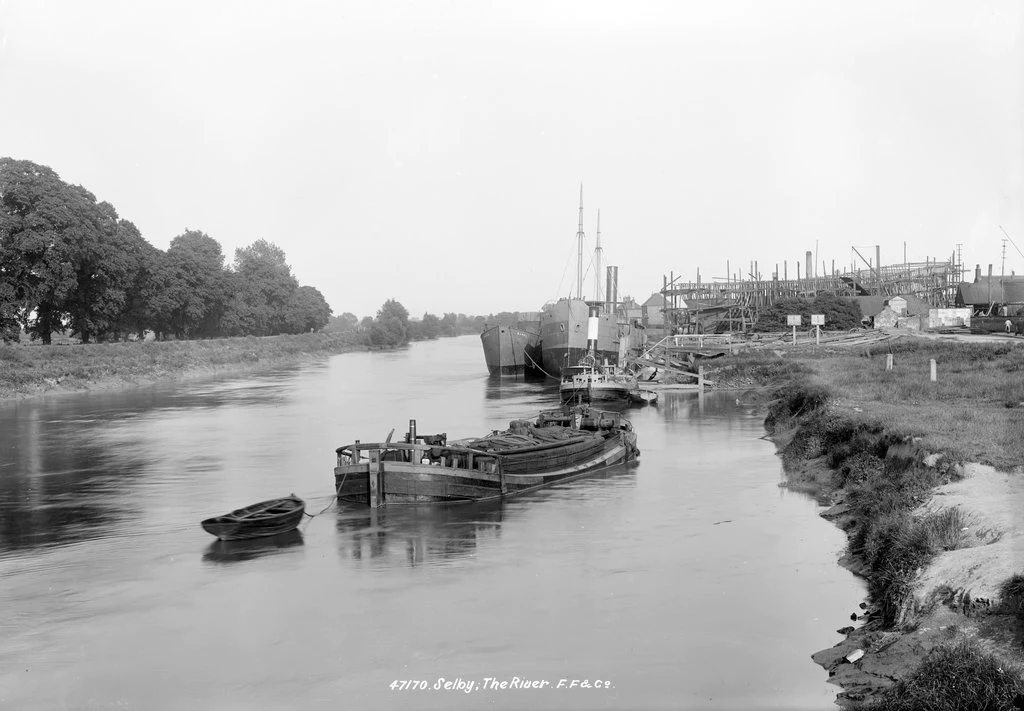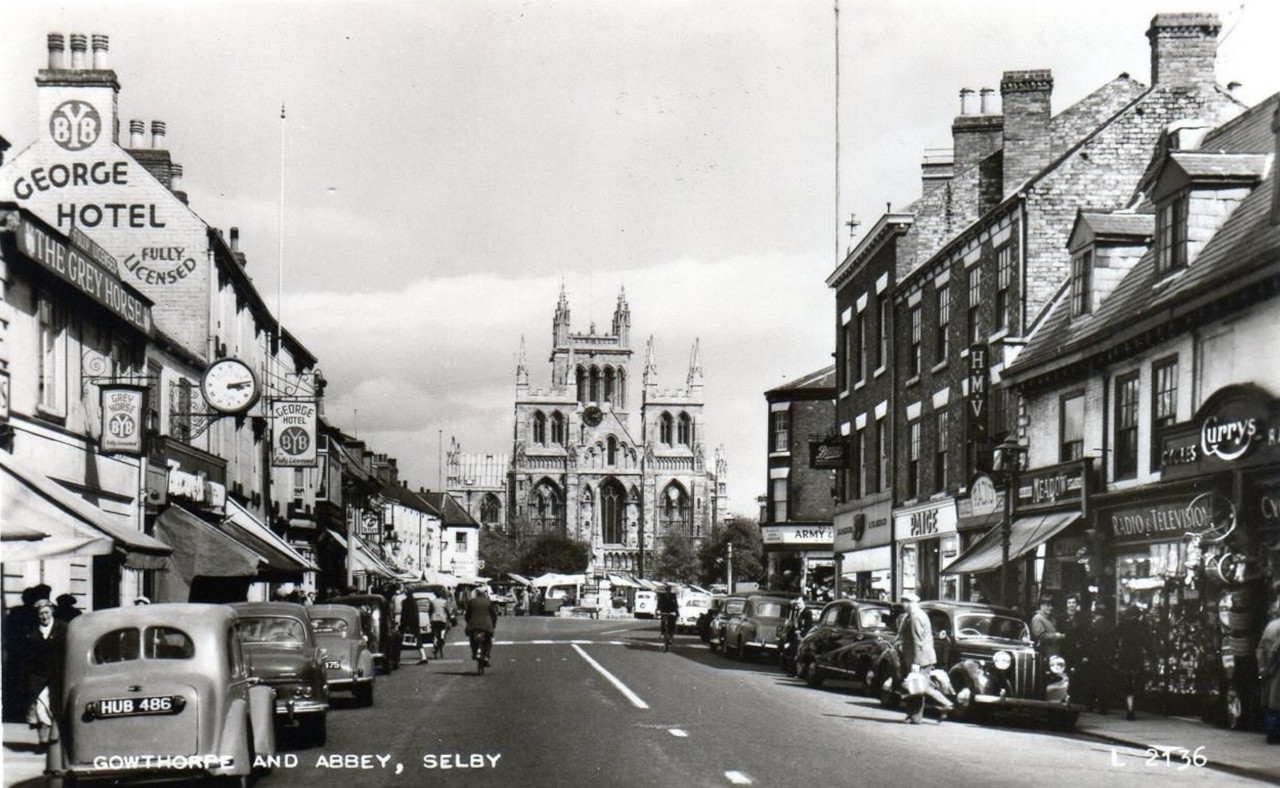Origins (779-1050)
The town's origins date from the establishment of a Viking settlement on the banks of the River Ouse. Archaeological investigations in Selby have revealed extensive remains, including waterlogged deposits in the core of the town dating from the Roman period onwards. It is believed that Selby originated as a settlement called Seletun which was referred to in the Anglo-Saxon Chronicle of AD 779.
The place-name 'Selby' is first attested in a Yorkshire charter c.1030, where it appears as Seleby. It appears as Selbi c.1050. The name is thought to be a Scandinavian form of Seletun, meaning 'sallow tree settlement'.
Royalty (1068-1069)
The town of Selby is on the main route north from the Midlands and is the traditional birthplace of King Henry I, fourth son of William the Conqueror, in 1068/69; the connection is supported by William and his wife Matilda's unique joint charter of Selby Abbey, far to the north of their usual circuit of activities, which was founded for Benedict of Auxerre in 1069 and subsequently supported by the de Lacy family. King Henry I is reputed to have been born there in either 1068 or 1069. A notable feature of the abbey is the 14th-century Washington Window, featuring the heraldic arms of the ancestors of George Washington, the first president of the United States. The design is often cited as an influence for the Stars and Stripes flag.
Abbey (1539-1618)
It is said that the abbey was founded when Benedict saw three swans on a lake in Selby, and he saw it as a sign of the Father, Son and Holy Ghost, and that is why the official crest of Selby Abbey is three swans. Selby Abbey was closed in 1539 as part of the Dissolution of the Monasteries under Henry VIII and the majority of the buildings have since been demolished. The central nave of the abbey church survived and in 1618 it became the parish church of Selby.
Civil War (1644)
During the English Civil War, the Royalist garrison of Selby was captured by Parliamentarians in the Battle of Selby on 11 April 1644. There are other historical sites, such as the cholera burial ground on the north side of the abbey, the market cross and the local school, Selby High School. The Market Place has existed since the early 14th century when the market was moved away from the monastery churchyard. The Crescent which curves eastwards from James Street was planned in the early 19th century by a local man, John Audus, after seeing Lansdown Crescent in Bath, Somerset.
shipbuilding (1998-2014)
Selby was also a centre for shipbuilding, with vessels launched into the river. This often required the more unusual technique of launching the vessels side-on into the river due to lack of space for a more conventional stern first or bow first launch. One famous vessel of the Cochrane and Son's shipyard of the town is the preserved trawler Ross Tiger at Grimsby's National Fishing Heritage Centre. Cochrane launched their last vessel into the Ouse in 1998, a historical occasion which people around the area went to see. Once Cochrane had closed, the massive cranes still stood over the skyline of Selby until 2001, when seriously strong winds blew them down. Most of the shipyard buildings are still standing (as of February 2014) and the site along with interviews with former employees and archive film was featured in a 2013 video production 'Cochranes of Selby'. The site of the shipyard is currently home to many small businesses who work in the same buildings that were once used to build the Selby ships.

